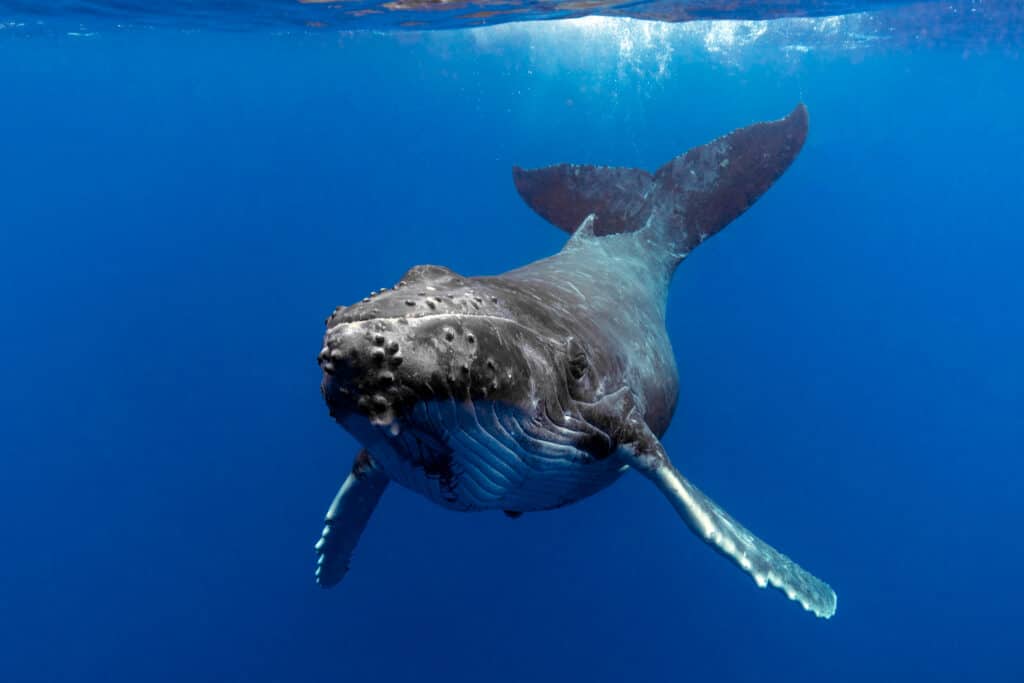Continue reading for our analysis...

Have you ever met a behemoth of a baby? If you’re envisioning chubby cheeks and tubby arms and legs, then we’re not exactly on the same page. When we say behemoth, we want you to picture the biggest thing you’ve ever seen. And then maybe that will be close enough. Don’t miss this baby humpback whale breaking the internet with his size in the video above.
Massive Humpback Sighting in Marina
As the video above starts there is a line of people out on the marina. And they are in for one shocking sight. We are lucky enough to get an aerial view of this sighting as a massive humpback whale comes up and starts to swim around. He quickly swishes his tail around, otherwise known as a fluke. He uses this opportunity to put on a spectacular show for the people on the dock watching.
How Big Is a Baby Humpback Whale?

Killer whales will hunt humpback whales.
©Craig Lambert Photography/Shutterstock.com
At first glance, it might look like this is a mature humpback; however, it is in fact a baby! According to the American Cetacean Society, “A humpback whale calf is between 10-15 feet (3-4.5 m) long at birth and weighs up to 1 ton (907 kg).” It’s difficult to believe that a baby could weigh that much, but it just goes to show about big humpback whales are.
Full maturity can be reached in just 4-10 years of age. At full maturity, a humpback whale can weigh up to 40 tons (80,000 pounds) and reach up to 60 feet in length, according to the National Oceanic and Atmospheric Administration.
What Sounds Does a Humpback Whale Make?
Like all animals, humpback whales need to communicate. Humpbacks are known to live in small groups known as pods. These pods can be anywhere from 2-3 members or even up to 15. To communicate with each other, they use a series of vocalizations. They can make sounds like clicks, whistles, and pulse calls, the NOAA states.
Scientists have studied these sounds and have gathered that clicks are used for navigation to help lead their pods. When they make a clicking sound, it will bounce off objects like rocks or even a boating deck like in the video above. The sound will then bounce back, letting them know where it is.
Whistles and pulses have been identified as being more social. In the video posted at the top, we hear the sounds of the baby humpback, almost screeching. This would be the social calling the NOAA describes. And what a beautiful and magnificent opportunity for the people watching to hear.
Thank you for reading! Have some feedback for us? Contact the AZ Animals editorial team.






